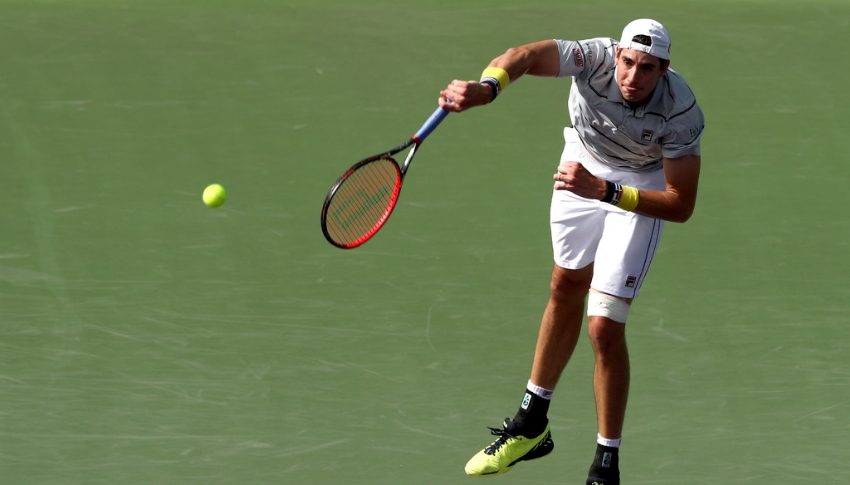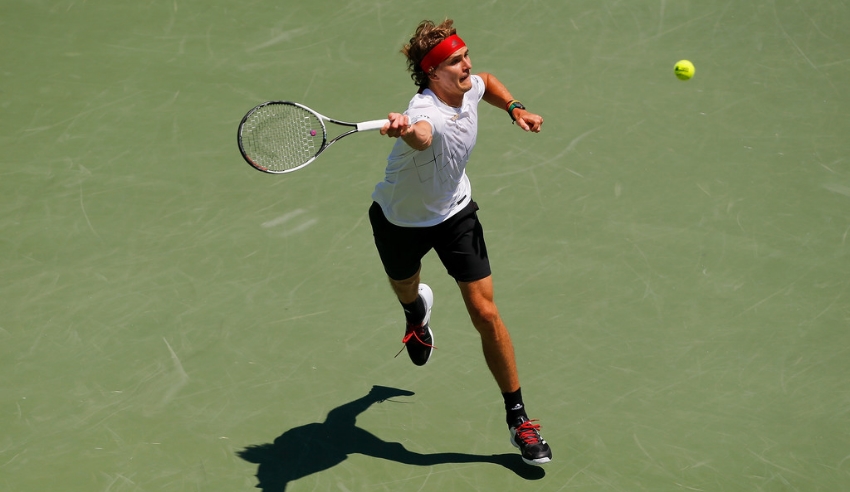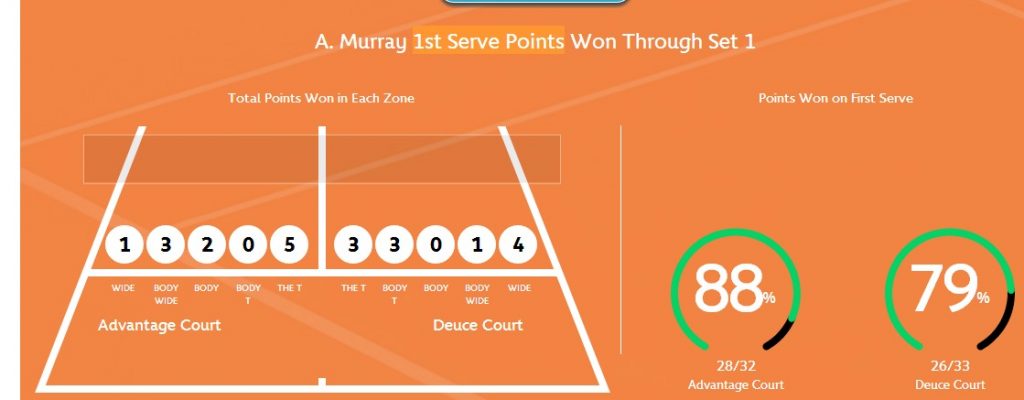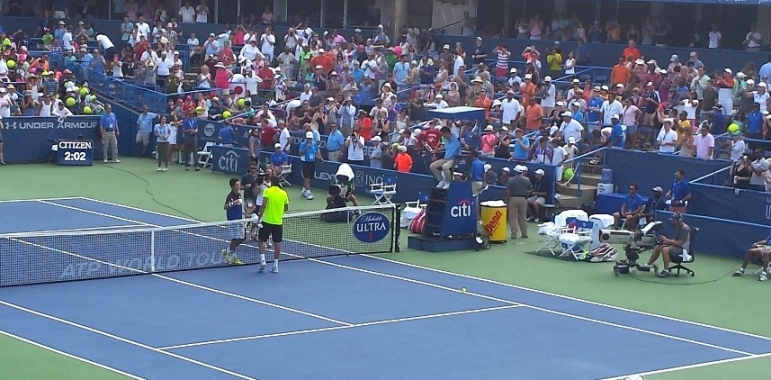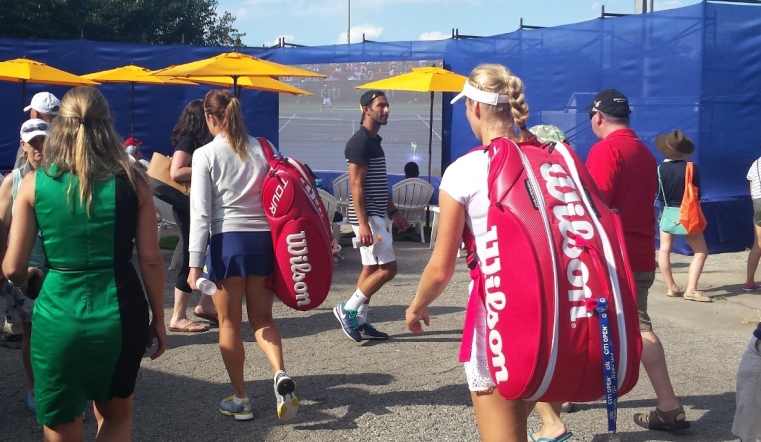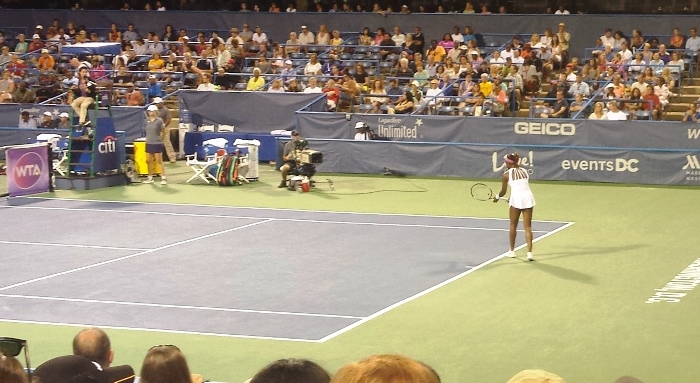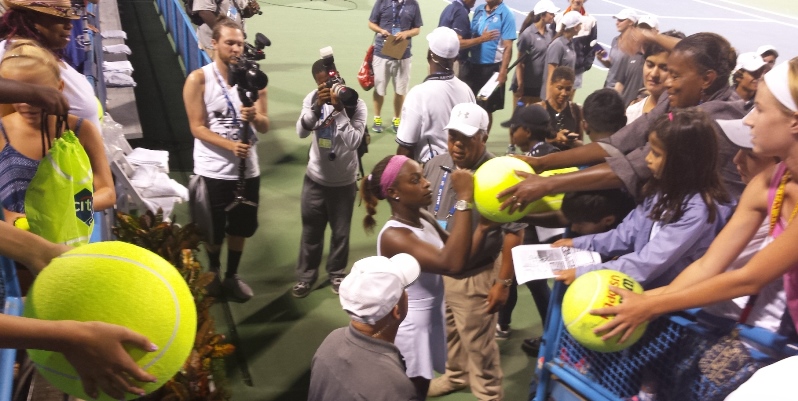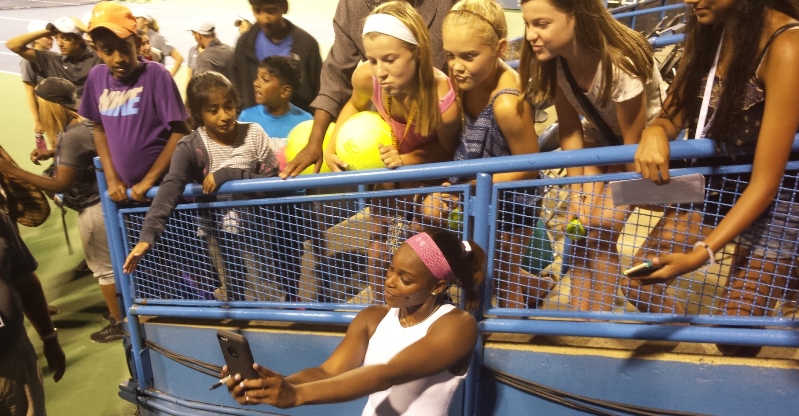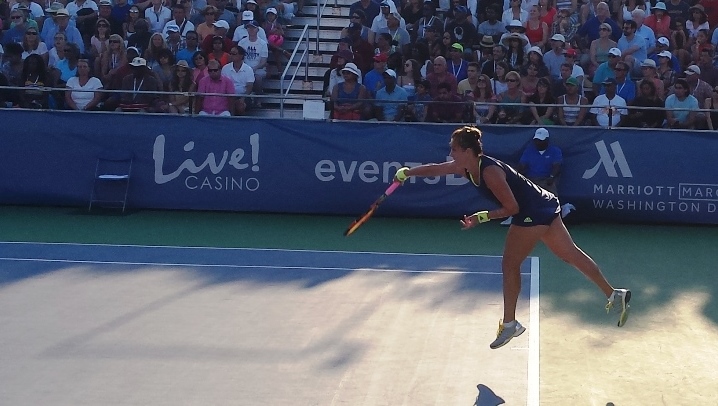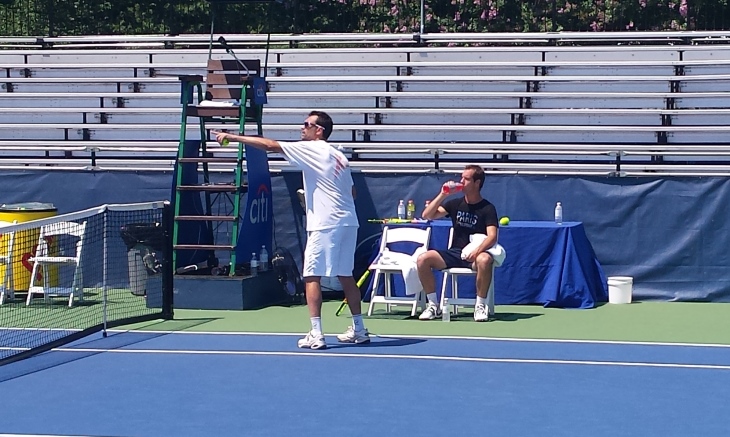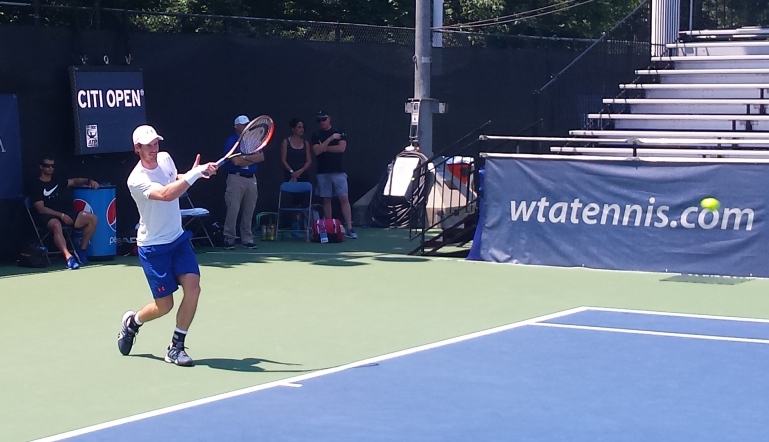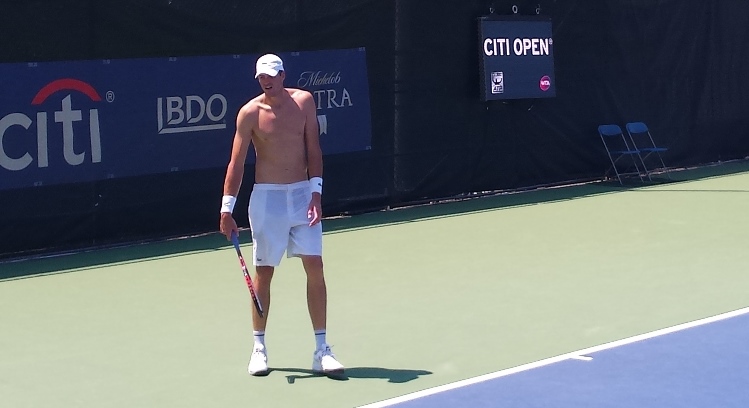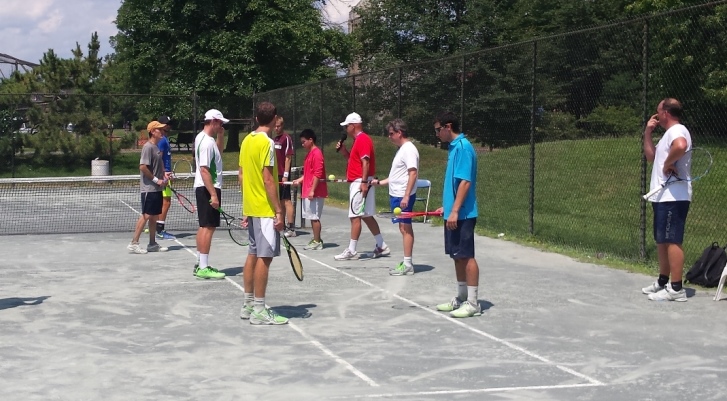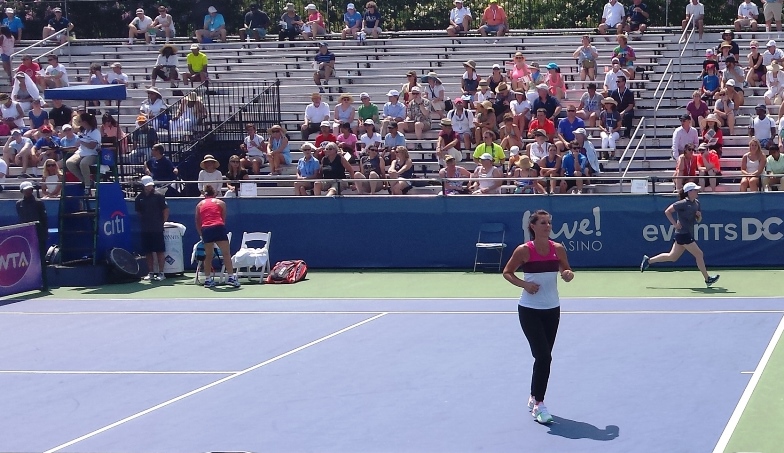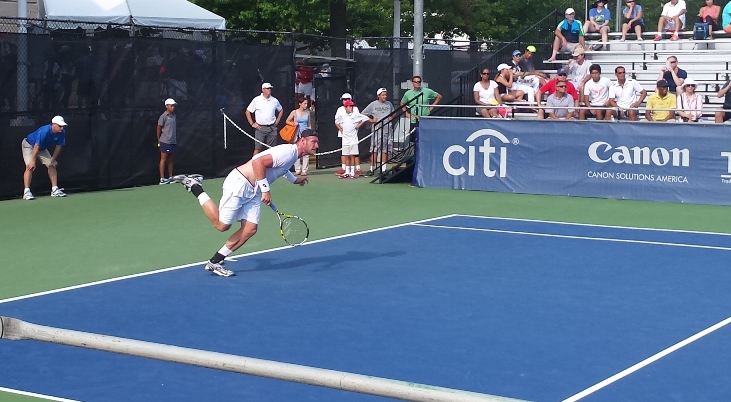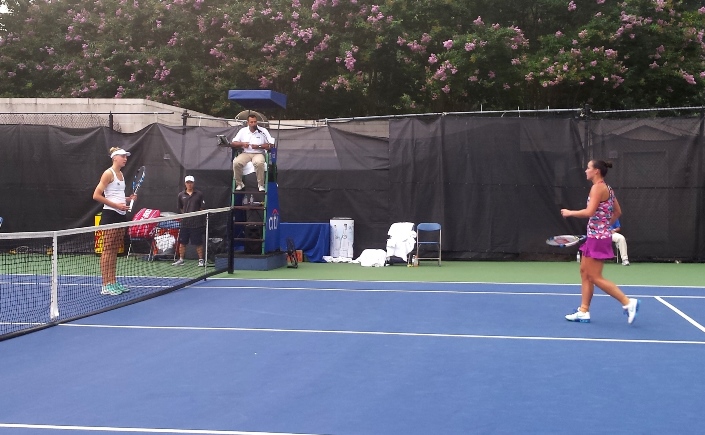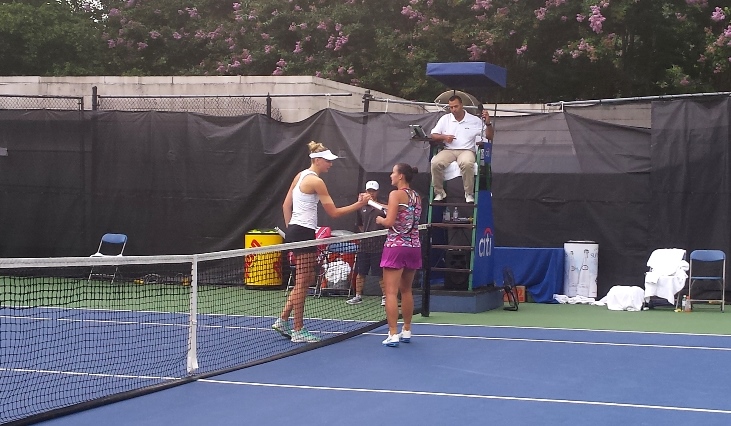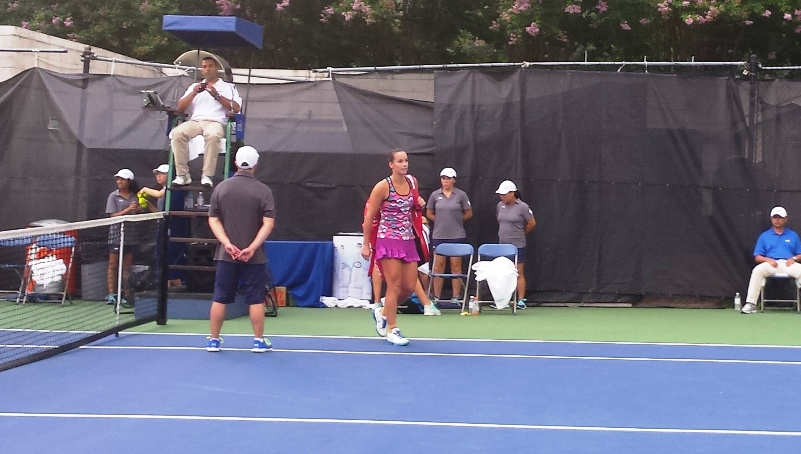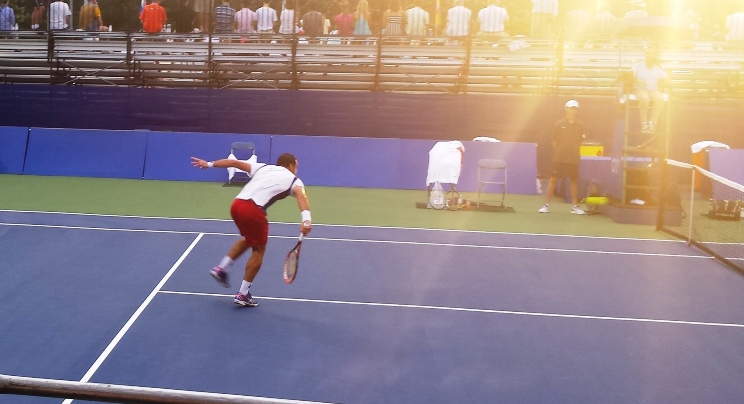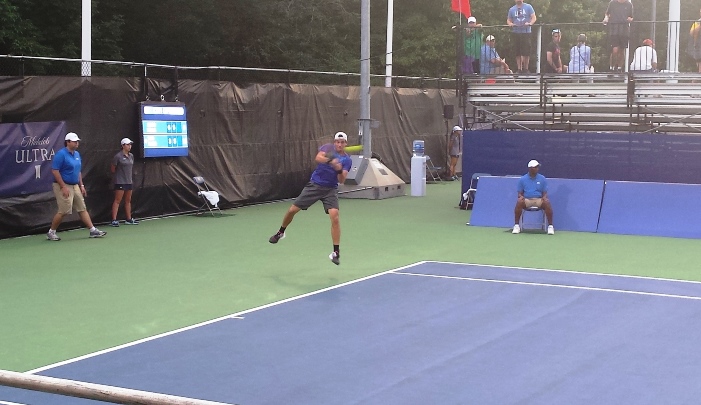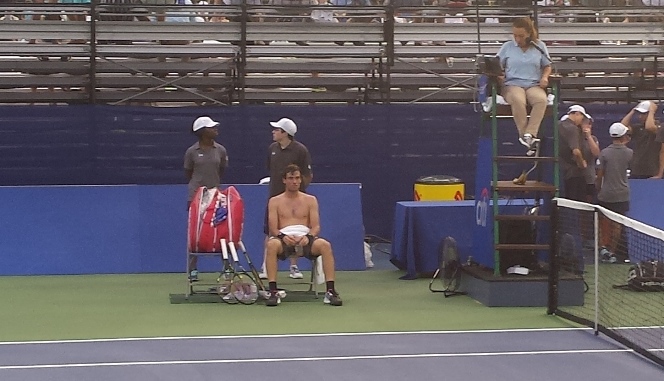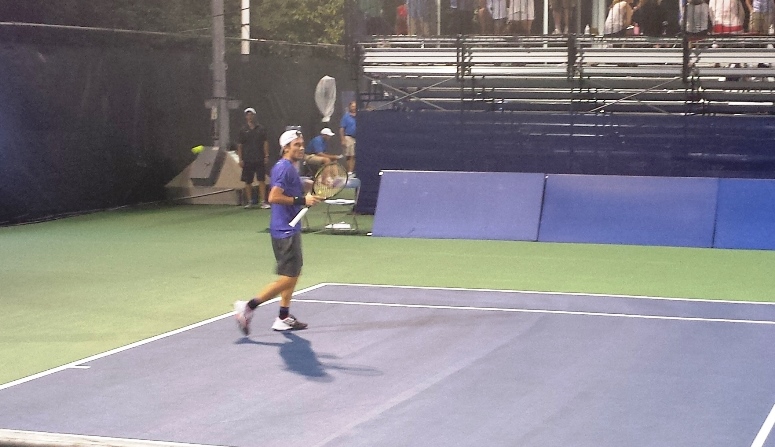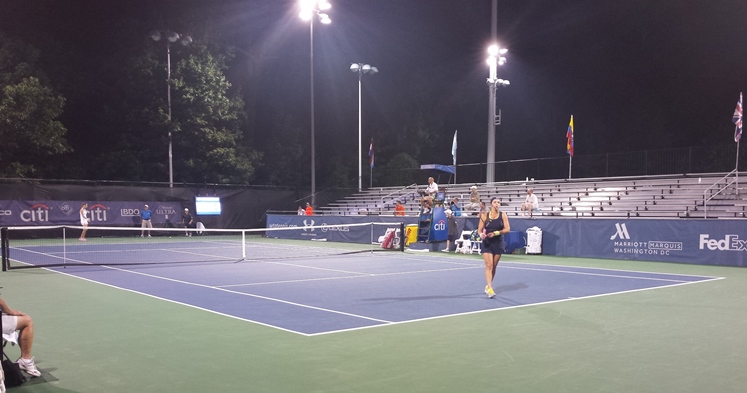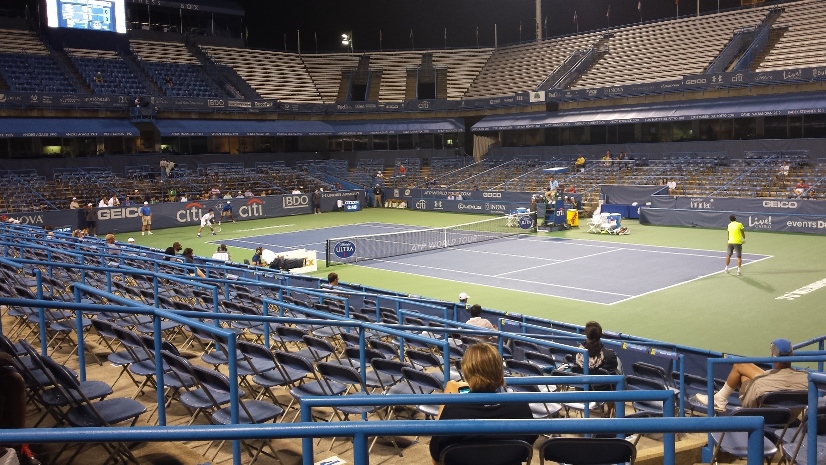The scoreboard at the end of today’s first semifinal at the Miami Open between last year’s title holder John Isner and the young qualifier Félix Auger-Aliassime showed a very Isnerian score, 7-6 7-6 in favor of the American. Nothing groundbreaking there, considering that John has basically marched all the way to the finals via sets won in tiebreakers except one (7-5, whoop-de-doo, a virtual rupture in the flow). He is also known for playing a mammoth number of tiebreakers throughout his career.
There were a couple of aspects, however, that set this victory apart from the others, thus keeping me from labeling it a “vintage” Isnerian win. First of all, he lost his service twice in the same match, once each set, after having lost it only twice during the rest of the tournament. He literally came back from the brink of defeat in both sets. Secondly, he stumbled off the block to begin the match, making uncharacteristic errors, and never seemed to fully settle throughout the match, even after brief sequences of brilliance which made it seem as if he were reestablishing his game. Simply put, he did not play very well.
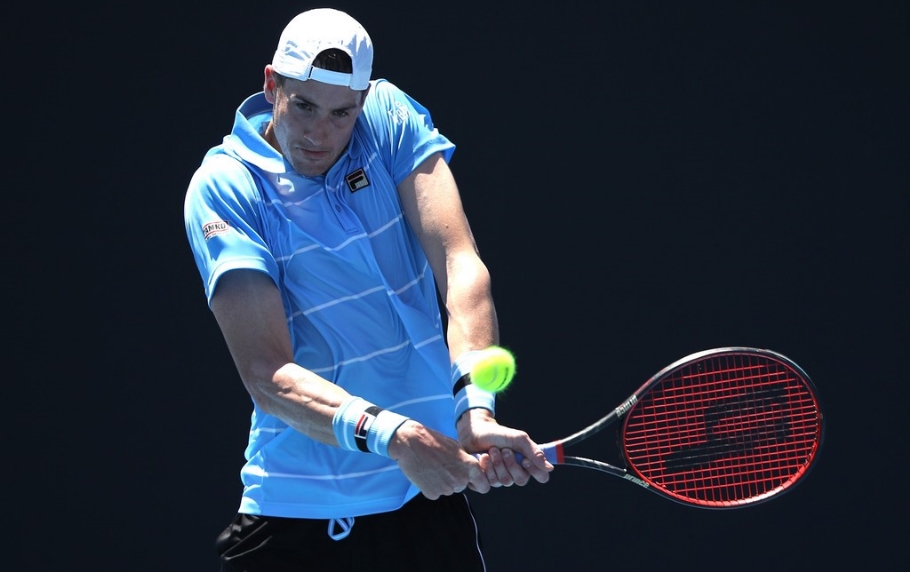
Photo: Mark Kolbe – Getty Images AsiaPac
Instead, at least for the first half hour of the encounter, it looked like it was rather the 18-year-old Auger-Aliassime, playing in his first career ATP1000 semifinal, who was executing his game plan with the disposition of a seasoned pro, even though he was also far from playing a perfect match. For example, I fully expected Félix to have a commanding advantage in points during which both players found themselves on equal footing from the baseline. **
** These “equal footing from the baseline” points that mention in this write-up are not related to the number of shots hit in a rally. They strictly include those points during which Auger-Aliassime had time to get in a position to hit a comfortable ground stroke with Isner also placed at the baseline on the other side.
Yet, Auger-Aliassime never seemed to establish any visible dominance in such points, often committing unforced errors of his own early in rallies. It was only at the end of the seventh game, up 4-3, that he began leading John in this particular category. In that seventh game, two such points catapulted Félix to a 0-30 lead on his opponent’s serve. Two shaky forehand errors by Isner (yes, I repeat, he was error-prone throughout the match) completed the break.
But getting back to my earlier point, I had expected more of those equal-footing rallies to end in Auger-Aliassime’s favor, but as I noted above, they did not. It was not because he was jittery, but rather because he could not establish his rhythm against a player who was not giving him more than two or three shots to hit. This is not a concern unique to Félix, as most ATP players suffer from the same syndrome when they have to play the big-serving American. There is no doubt, however, that Félix was less prepared for it than others. In my opinion, that played a big role in his inability to take an early lead, even before the seventh game when John had yet to find stability in his game.
Having said that, Auger-Aliassime still had a clear advantage when he confirmed the break and went up 5-3. He put in 63% of first serves in up to that point, with two aces and zero double faults. In fact, knowing now what took place in the 5-4 game, one could oddly say that his serve was his most reliable weapon until then.
Well, as to what took place in that 5-4 game on Auger-Aliassime’s serve, the three double faults precisely, nerves seem to be the most reasonable explanation. For my part, I don’t believe his first double fault resulted from nerves. He just went up 15-0 after a very solid point that he won at the net. It was his fourth successful point at the net in five tries up to that moment in the match. He was poised to put the set away. He even went for a powerful serve to the outside at 15-0, clearly aiming for a clean ace. It got stuck in the net. Then, he tossed the ball way to the right and front on his second serve and made his first double fault. I agree with everyone else that the next two double faults at 15-15, and 15-40, were the result of doubt rapidly creeping into his mind.
Auger-Aliassime still showed great resolve at 5-6 by playing one of his best games until then to show Isner, who was suddenly on fire after winning three games in a row, that he was not fading away. The problem is that, even though he was not having a banner day by his standards, Isner can probably stay calmer through a tiebreaker than can most of his colleagues. Auger-Aliassime, not so much.
Up 1-0 and serving twice early in the tiebreaker, Félix lost both of his serving points. The first one was a double fault. The second one was another equal-footing rally (noted above) during which Félix slightly held back on his ground strokes, allowing John to eventually take his chance on a shorter ball and get another mini-break. In that first set tiebreaker, Félix only made one first serve and lost it 7-3 on one of the longest rallies of the match (17 shots) that ended, oddly again, with an unforced error by Auger-Aliassime.
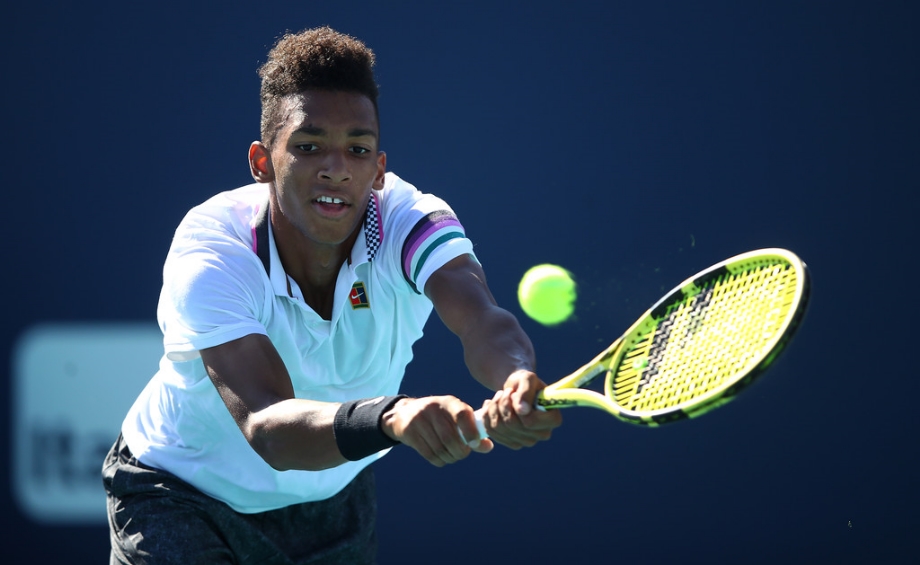
Photo: Julian Finney – Getty Images North America
Second set progressed much in the same pattern as the first. Félix once again got the early break and served for the set at 5-3. He even won the first point to go up 15-0, just like in the first set. It then got complicated, again, when he did not do enough with his first volley at 15-15 and gave Isner a second chance at a passing shot. He lost the point. To make matters worse, he double-faulted on the next one to go down 15-40. At 30-40, Félix prepared the point beautifully, forcing John to scramble a high floater back. He made the right decision to move forward and hit a swing volley to put it away before John could recover, but he gagged the shot into the net. Just like that, Isner was allowed to crawl back into the set, again.
The second-set tiebreaker began on Auger-Aliassime’s serve with another one of those equal-footing baseline rallies noted above, ending with yet another unforced error by Félix. It turned out to be a precious mini-break as Isner did not lose a single point on his serve in the tiebreaker and rolled to another victory with an unreturnable serve on match point.
At the end of the day, it was a missed opportunity for Auger-Aliassime not only because he served for both sets, but also because Isner’s performance was spotty throughout the match, especially in the first set. Auger-Aliassime just could not win enough key points at different points of the match, and especially in those games when he served for each set. I reckon Isner feels fortunate to have made it to the final. I also suspect that he knows he will need to perform significantly better than he did today, when he faces either Federer or Shapovalov (to be played later) in the finals on Sunday.

